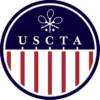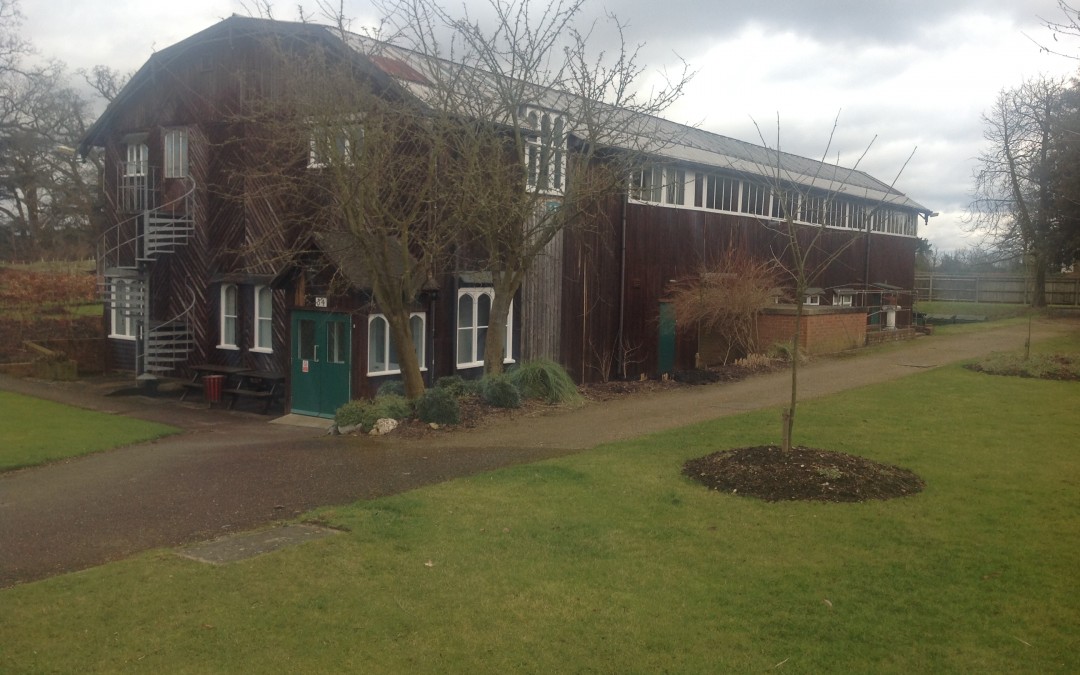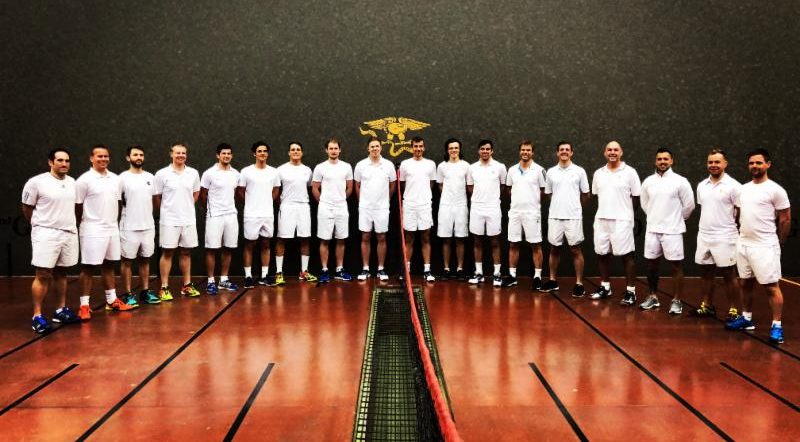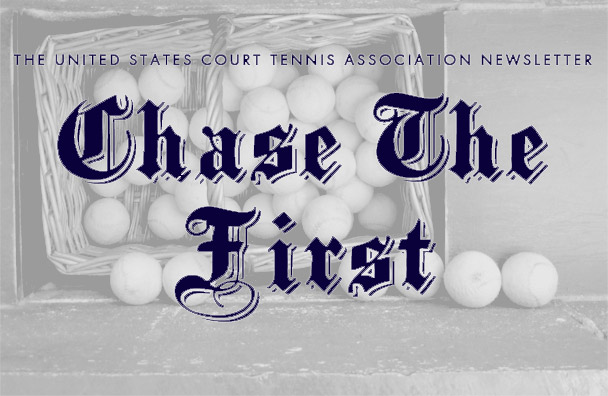Stické tennis.
by
Nigel à Brassard
“Stické provides most vigorous exercise, and at the same time affords considerable opportunity to the player who uses his head. Curious twists can be obtained by hitting on the side walls, and the ball often has an egg-shaped appearance. There is little doubt that stické is a splendid game for country houses, where rackets courts are too large an undertaking and squash rackets provides too insipid an amusement.”
From The Times March 11th 1910.
Stické was invented by the Royal Artillery in the 1870s as similar to rackets and providing good exercise without “the heavy outlay incidental to the construction of a rackets court.” The court’s floor and walls were made of 9 foot square wooden artillery targets which meant that the court dimensions were 27 feet by 81 feet.
Lord Dufferin and Ava built an indoor stické court at Rideau Hall, Ottawa in 1875 and later in India at Simla and Cooch Bihar. In 1880 Lord Revelstoke built a stické court at Membland Hall in Devon. Revelstoke was a member of ‘The Souls’ a social group of aristocrats, politicians and writers. The Souls held lavish ‘Friday to Monday’ country house parties with activities such as golf, tennis, bicycling, charades and scrabble. William Grenfell (Lord Desborough) and his wife Ettie were leading members of the Souls and in 1893 built a stické court at Taplow Court. Over the next thirty years courts were built across the UK including ones at Avon Tyrell by Lord Manners, Cliveden by Lord Astor, Buckingham Palace by George V and Greenlands by Viscount Hambleden.
The Souls embraced stické because it was played by men and women and built on the principle of ‘balance’ – whereby no side gained advantage by following a particular tactical approach. Stické was easy to learn, played all year round, involved relatively inexpensive facilities (the same scoring, rackets and low-pressure balls as lawn tennis) and involved cerebral input.
Today, less than an hundred people play on the remaining courts at Hartham Park, Wiltshire (built by Sir John Dickson-Poynder) and Knightshayes Court, Devon
(built by Sir Ian Heathcoat-Amory). Hartham Park Stické Tennis Club flourishes thanks to the support of Jeff Thomas, the owner of Hartham House. Over thirty members play regularly on the court and there is the likelihood of a World Championship tournament played at the club in the next few months. The court at Knighthayes Court is an active private court owned by the kinsmen of the Heathcoat- Amory family. The court in Simla still exists but is used for badminton. The game is enjoying a renaissance as it “does not require a long novitiate before satisfactory progress is made by ordinary persons of mature age and understanding. It is not a selfish game, and leaves no unpleasant after-effects which trouble the introspective mind of the player, but rather a tranquil, exhilarating and heartful sense of cheerful contentment for well-earned exercise faithfully performed”. (From The Game of Stické – Its Evolution and Progress. The Windsor Magazine 1904). Moves are afoot to try and bring some of the dozen or so courts in the UK which are still standing back into service. Also there is an idea that a ‘pop-up’ court could be constructed which could be set up temporarily over indoor tennis courts at clubs, schools and universities. Long term it is hoped that individuals who appreciate the compelling attractions of stické may be tempted to commission the building of new courts.
Stické tennis appeals to all ages and both sexes. The rules are easily learned and the game can be played all year round and in all weathers. The equipment is familiar and straightforward – a regular lawn tennis racket (traditionalists prefer wooden gut-strung rackets) and de-pressurized lawn tennis balls. The game is a great leveller and one of the joys is that typically there are long rallies and humour is always a strong feature of play. This makes it the perfect social game. It does not have the complex rules, heavy balls and rackets of real (court) tennis and unlike lawn tennis it minimises the over-whelming advantages enjoyed by the better lawn tennis player that can result in unreturned winning serves that frustrate server and receiver.
The American Howard Gould (brother of Jay Gould – the Court Tennis Champion) bought Mongewell Park, Oxfordshire in 1918 and built a stické court in the grounds. It is perhaps surprising that there are no records of a stické court ever being built in the United States. Perhaps, with the renaissance of stické in the UK, an American will decide that it is time for this capital sport to be introduced into the United States.
Nigel à Brassard is a London based investment banker. He is a member of the M.C.C. and plays real tennis at Lord’s and is a playing member of the Hartham Park Stické Tennis Club. He is a regular contributor to magazines and books on a range of subjects including polo, real tennis, rowing, cricket, stické tennis, John Keats, London clubs and military history.
Click the link below to watch a short piece on Sticke Tennis through vimeo



